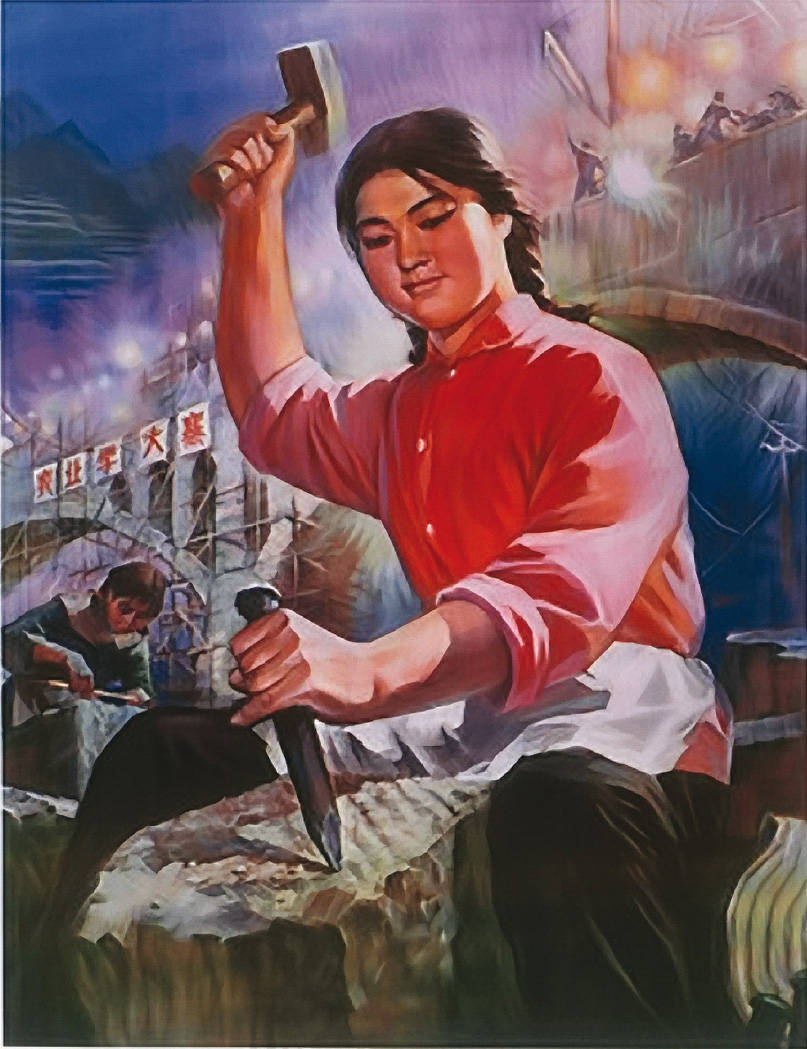Visual Source 21.3
Women, Nature, and Industrialization
The actual outcomes of the commune movement departed radically from their idealistic goals. Economic disruption occasioned by the creation of communes contributed a great deal to the enormous famines of the late 1950s, in which many millions perished. Furthermore, efforts to involve the peasants in iron and steel production through the creation of much-heralded “backyard furnaces,” illustrated in this image, proved a failure. Most of the metal produced in these primitive facilities was of poor quality and essentially unusable. Such efforts further impoverished the rural areas as peasants were encouraged to contribute their pots, pans, and anything made of iron to the smelting furnaces.
Among the core values of Maoist communism were human mastery over the natural order, rapid industrialization, and the liberation of women from ancient limitations and oppressions in order to mobilize them for the task of building socialism. Visual Source 21.3, a 1975 poster, illustrates these values. Its caption reads: “Women Can Hold Up Half the Sky; Surely the Face of Nature Can Be Transformed.”

Question
In what ways does this poster reflect Chinese communism’s core values?
Question
How is the young woman in this image portrayed? What does the expression on her face convey? Notice her clothing and the shape of her forearms, and the general absence of a feminine figure. Why do you think she is portrayed in this largely sexless fashion? What does this suggest about the communist attitude toward sexuality?
Question
What does this image suggest about how the party sought to realize gender equality? What is the significance of the work the young woman is doing?
Question
Notice the lights that illuminate a nighttime work scene. What does this suggest about attitudes toward work and production?